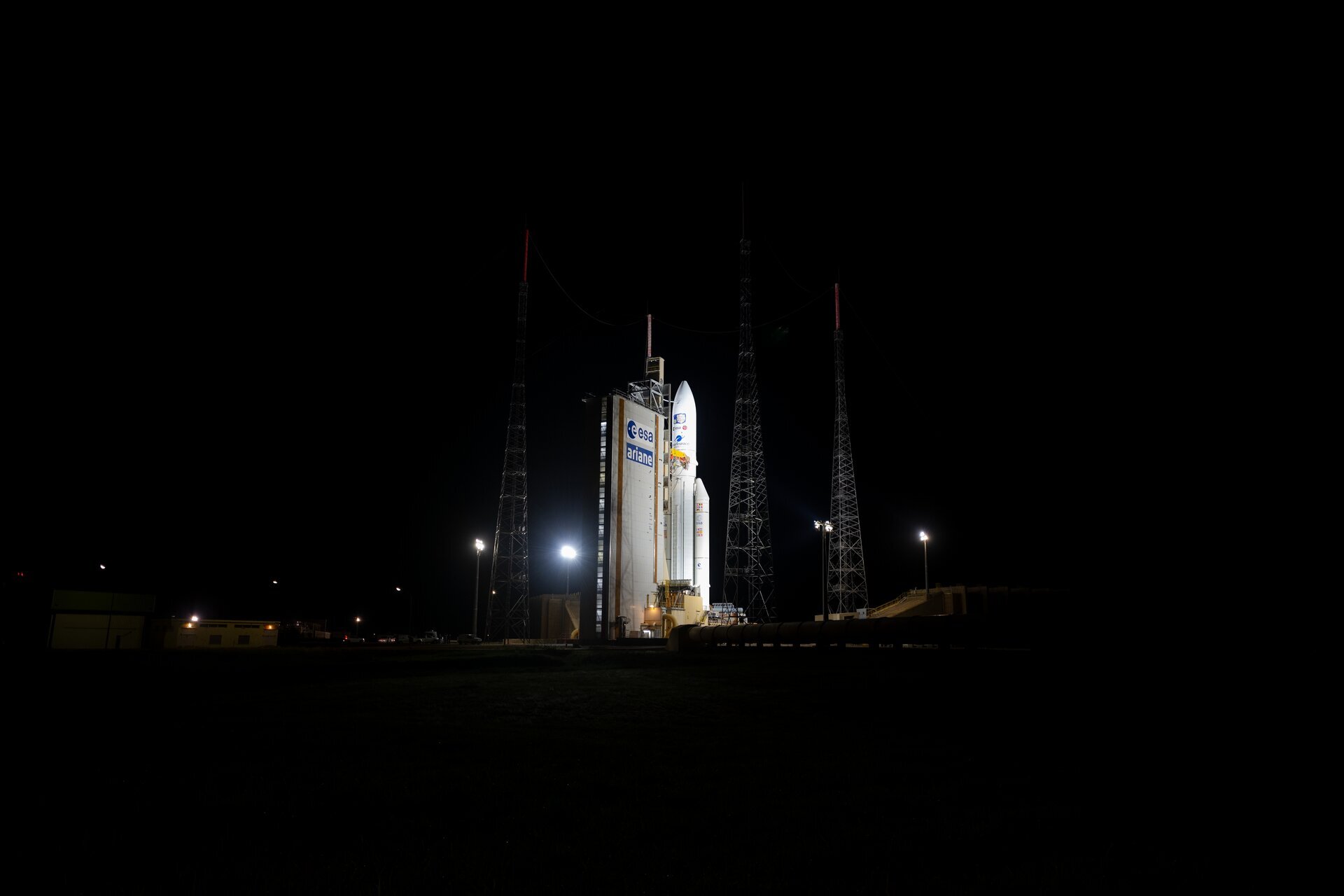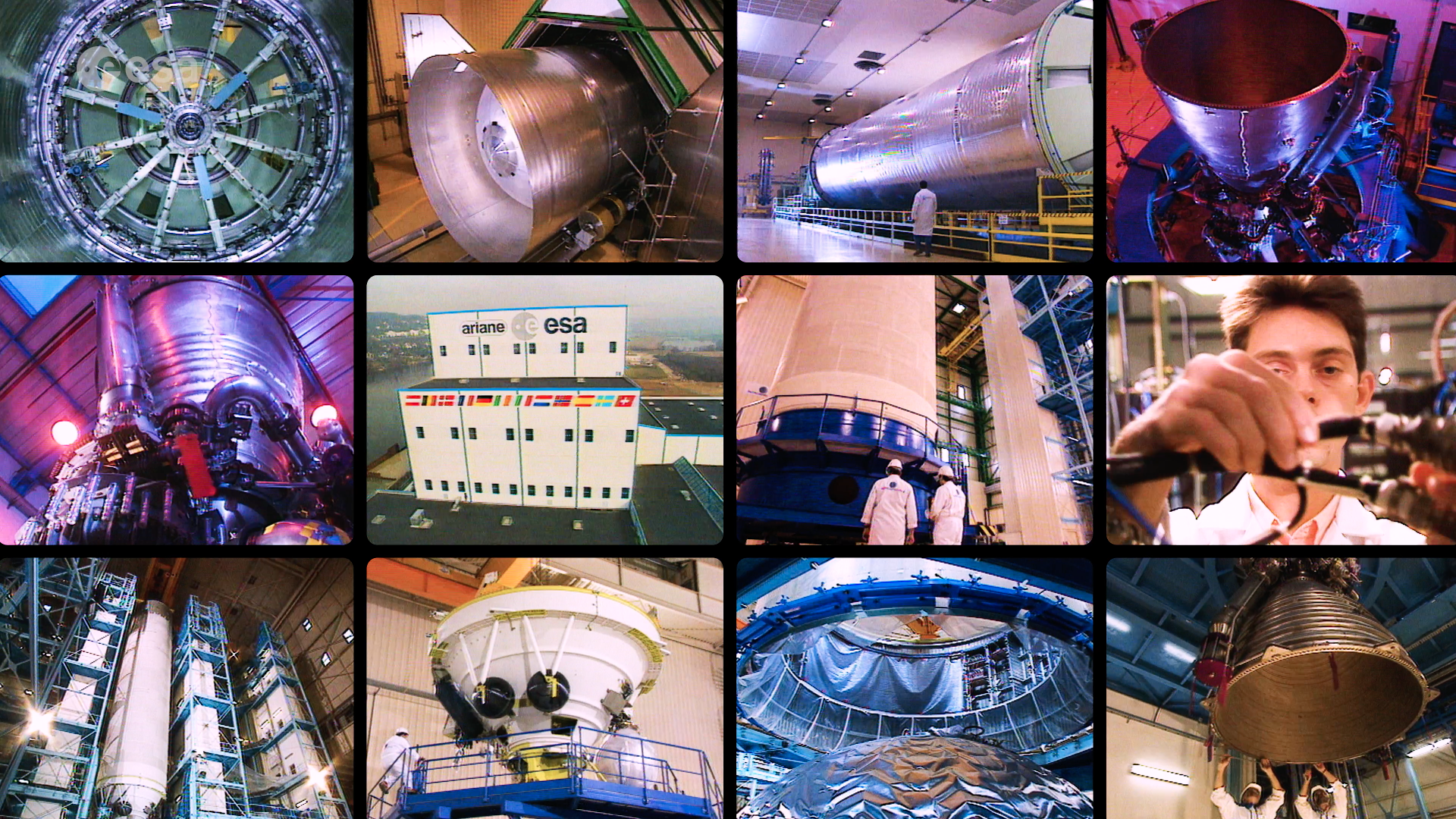WASHINGTON — Arianespace has postponed the final launch of the Ariane 5, potentially for several weeks, after discovering a potential problem with pyrotechnical systems on the rocket.
In a briefing a few hours later, Pierre-Yves Tissier, chief technical officer at Arianespace, said that the company was informed June 9 of a “nonconformance” in pyrotechnical transmission lines like those used on the Ariane 5 during acceptance testing for another program. X-ray inspections of the Ariane 5 raised doubts about three lines on the vehicle, one used in the separation system for one of the two solid rocket boosters, and two in the “distancing” system used for the boosters.
Both the separation and distancing systems have redundancies to ensure they operate, but Tissier said the company’s policy was to launch only with that redundancy intact. Arianespace then decided to test four lines with characteristics similar to the three suspect lines, with those tests taking place June 14 and 15.
“Because these tests were not all successful, and therefore were not able to give us sufficient confidence on the reliability of the redundancies, it was decided not to go in flight and to replace these doubtful lines,” he said.
Arianespace has not set a new launch date for the mission. Tissier said the company would provide an update in the last week of June about the progress in replacing the lines and planning for a new launch attempt. That suggests a delay of at least a few weeks, and perhaps longer.
The launch, designated VA261 by Arianespace, is carrying two government communications satellites. One, Heinrich-Hertz-Satellit, was built by OHB for the German Space Agency, working in collaboration with other German government agencies. The spacecraft will test advanced communication satellite technologies, such as onboard processing. The other, Syracuse 4B, is a communications satellite built for the French military by a consortium of Airbus Defence and Space and Thales Alenia Space.
The launch, when it does occur, will mark the retirement of the Ariane 5. The vehicle made its first, unsuccessful launch in June 1996, and suffered a partial failure on its second launch in October 1997 before an unqualified success on its third launch in October 1998. For much of its career, the Ariane 5 was a major player in the commercial launch market, capable of launching two large geostationary communications satellites at a time.
With the retirement of Ariane 5, Europe will be left temporarily without the ability to launch large satellites on its own rockets. Arianespace had expected to overlap the end of the Ariane 5 with the introduction of the Ariane 6, but that vehicle has suffered development delays that pushed back its first launch by several years. Arianespace and the European Space Agency have not announced a new projected date for the first Ariane 6 launch, but executives with OHB, which is a supplier for the program, said in May they now expected the first launch to take place in early 2024.
The Ariane 6 delays are exacerbated by a failure of the Vega C in December 2022 that has grounded that vehicle, as well as the withdrawal of the Soyuz rocket from French Guiana after Russia’s invasion of Ukraine in February 2022. This has created what some in Europe have called a “launcher crisis” for the continent.
“It is true that, for some months, we will not have independent access for Europe into space with our own rockets, but this is very temporary,” Josef Aschbacher, director general of ESA, said June 5 during the Financial Times’ “Investing in Space” event. He noted Vega C should return to flight by the end of the year.
“If, for a couple of months, there’s not a rocket available, it’s bad enough. I’m the first one to call this a crisis,” he said. “But this is not something permanent.”
The Ariane 5 will generate some fireworks of its own on the United States' Independence Day.
Europe's veteran Ariane 5 rocket will generate some swan-song fireworks on the United States' Independence Day, if all goes according to plan.
The Ariane 5 heavy lifter was originally scheduled to fly for the last time on June 16. But that planned launch was called off on June 15, after mission team members discovered a potential problem with three pyrotechnical transmission lines that are associated with the Ariane 5's solid rocket boosters.
That issue has been resolved, according to Arianespace, the France-based company that operates the Ariane 5 for the European Space Agency. The rocket is now set to fly from Europe's Spaceport in Kourou, French Guiana on July 4, during a 95-minute window that opens at 5:30 p.m. EDT (2130 GMT; 6:30 p.m. local time in Kourou).
You can watch the liftoff here at Space.com when the time comes, courtesy of Arianespace.
The final Ariane 5 mission will deliver two satellites to geostationary transfer orbit (GTO), a waypoint on the road to geostationary orbit, which lies about 22,200 miles (35,800 kilometers) above Earth. (GTO is an elliptical path whose maximum altitude is close to that of geostationary orbit; satellites in GTO then move into the circular geostationary orbit by conducting engine burns.)
One of the spacecraft, the Heinrich-Hertz-Satellit, will research and test new communications technologies and scenarios for the German space agency DLR, Arianespace wrote in a mission description.
The other payload, Syracuse 4B, is a communications satellite that will be operated by the French military. Syracuse 4B "will enable the French Armed Forces to remain permanently connected during deployments," Arianespace wrote.
"Syracuse 4B will be totally protected against the most extreme jamming methods," the company added. "Built to defend French sovereignty, the satellite will also be able to support operations led by NATO and the EU."
The Ariane 5, which can carry more than 22 tons (20 metric tons) of payload to low Earth orbit, has been a fixture on the launch scene for decades: The rocket debuted in 1996 and now has 116 liftoffs under its belt.
Some of those flights carried very high-profile payloads skyward. For example, the Ariane 5 lofted ESA's Rosetta comet-chasing mission in March 2004 and NASA's James Webb Space Telescope in December 2021.
Arianespace's new heavy lifter, the Ariane 6, will take over from the Ariane 5. The Ariane 6 has been in development for a decade and isn't expected to debut until late this year at the earliest.
Quelle: SC
----
Update: 28.06.2023
.
Final Ariane 5 launch scheduled for July 4 after fixes to booster separation system

Workers apply decals to the Ariane 5 payload fairing ahead of the final launch of Europe’s workhorse rocket. Credit: ESA/CNES/Arianespace/JM Guillon
Europe’s last Ariane 5 rocket is now scheduled to lift off July 4 after being grounded for more than two weeks due to a problem with the pyrotechnic systems required to jettison the launcher’s strap-on solid rocket boosters. Europe’s workhorse rocket is being retired after 27 years of service.
The Ariane 5 was originally scheduled to fly on June 16, but officials from Arianespace, the rocket’s commercial operator, announced on the eve of launch that they were delaying the mission to replace pyrotechnic transmission lines on the vehicle.
The suspect systems identified fire explosive charges that jettison one of the two solid rocket boosters two minutes into flight, then to activate the “distancing” system, which uses small thrusters on the boosters to ensure the spent casings safely fly clear of the Ariane 5’s core stage as it continues its climb to orbit.
Engineers at Arianespace and ArianeGroup, the Ariane 5’s builder and prime contractor, were informed of a problem discovered during inspections of a pyro line on another project. After X-ray inspections of the pyrotechnic lines on the Ariane 5 rocket being prepared for launch, officials found three pyro lines were “doubtful,” said Pierre-Yves Tissier, chief technical officer at Arianespace at a press briefing on June 15.
“These tests were not all successful and therefore we are not able give confidence on the reliability of the redundancies, it was decided not to go for flight and to replace these doubtful lines,” Tissier said.
On its final mission, designated VA261, the Ariane 5 will carry the Heinrich-Hertz and Syracuse 4B satellites into a geostationary transfer orbit from the Guiana Space Center on the northeastern coast of South America. The launch window on July 4 runs 6:30 p.m. to 8:05 p.m. local time (2130-2305 UTC).
Syracuse 4B, built by Airbus, will relay secure communications between French military aircraft, ground vehicles, and naval vessels, including submarines. The Heinrich Hertz satellite, built by OHB, will test new communications technologies on a mission funded by the German government.
This last mission will be the 117th for the Ariane 5 since it was introduced in 1996. The retirement will leave Europe without its own independent access to space. The new Ariane 6 vehicle is not expected to make its inaugural launch until 2024, years later than planned, and the Vega C small satellite launcher has been grounded since a failure in December 2022. In addition, the Russian invasion of Ukraine ended a cooperative venture that launched Soyuz rockets from Europe’s French Guiana spaceport.
Quelle: SN
----
Update: 4.07.2023
.
The last European Ariane 5 rocket arrives at the launch pad for its final countdown

The last Ariane 5 rocket arrives at the launch pad for its last satellite delivery mission. Image: Arianespace.
The last Ariane 5 rocket was hauled to the launch pad on Monday at the Guiana Space Centre, Europe’s South American spaceport. Ariane 5, which for years was the world’s leading commercial satellite launcher, is scheduled to make its final lift off on Tuesday, carrying a French military satellite and a communications technology testbed spacecraft for Germany.
Propelled by a 540-horsepower, diesel-powered tug, the 180-foot-tall (54.8-meter) Ariane 5 rocket rolled out of its final assembly building at jungle launch site and travelled along rails to the ELA-3 launch zone. The 1.7-miles (2.7-kilometer) journey took about two hours. With the rocket in place at the pad, technicians will work to connect the mobile launch table to the ground propellants lines that will feed liquid hydrogen and liquid oxygen into the rocket during the countdown.
Liftoff of this final mission, designated VA261, is scheduled at the opening of a 95-minute launch window that opens at 6:30 p.m. Kourou time (5:30 p.m. EDT / 2130 UTC) on Tuesday. The Ariane 5 will carry the Heinrich-Hertz and Syracuse 4B satellites into a geostationary transfer orbit from the Guiana Space Center on the northeastern coast of South America.
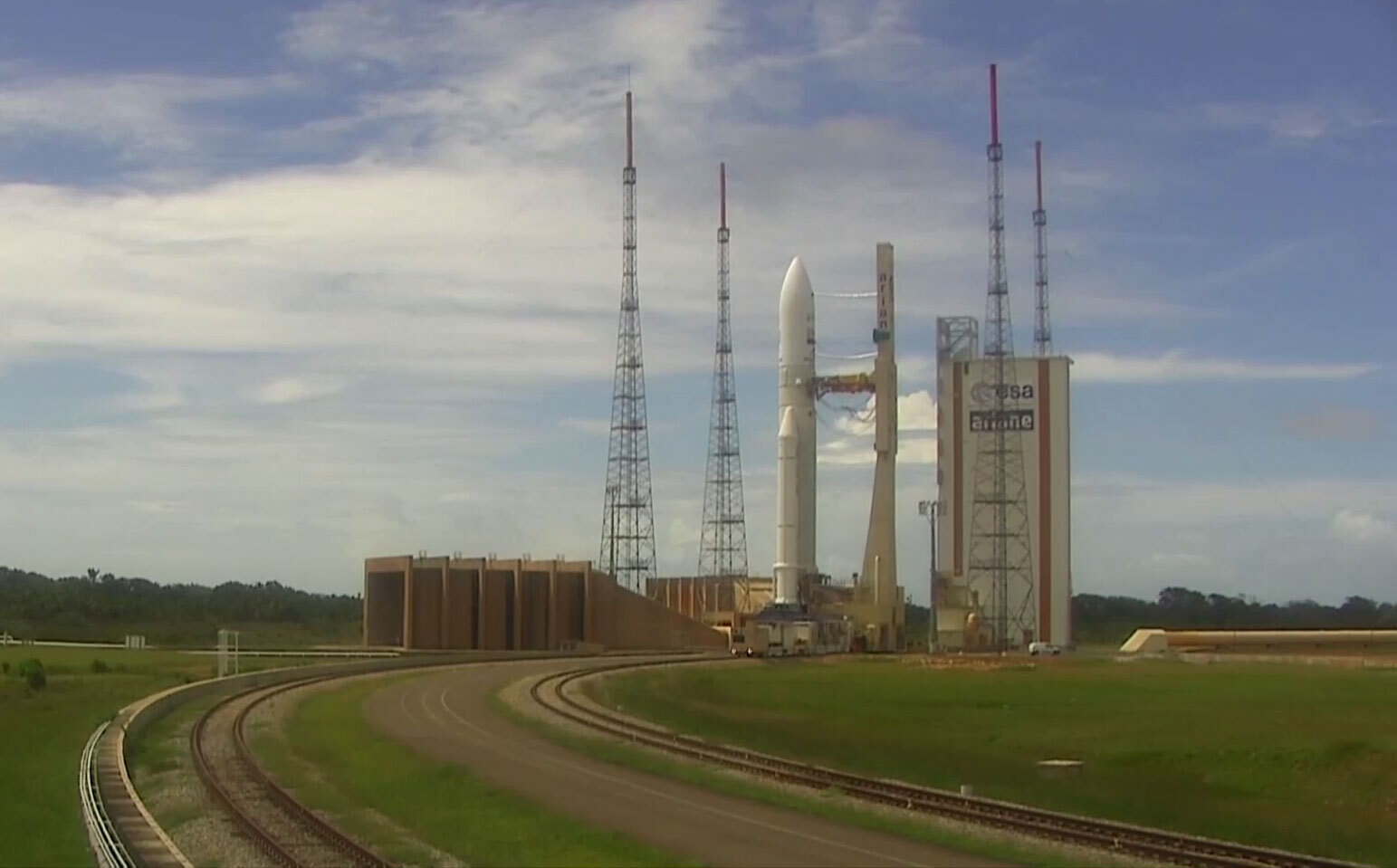
The Ariane 5 rocket nears the launch pad after being hauled along rails from its final assembly building. Image: Arianespace.
Syracuse 4B, built by Airbus, will relay secure communications between French military aircraft, ground vehicles, and naval vessels, including submarines. It was built by an industrial consortium formed by Thales Alenia Space and Airbus Defence and Space. The Heinrich Hertz satellite, built by OHB, will test new communications technologies on a mission funded by the German space agency, DLR. The spacecraft features onboard processors that can be reprogrammed to employ new communication protocols as they are developed.
This last mission will be the 117th for the Ariane 5 since it was introduced in 1996. The European rocket, marketed by Arianespace, was once dominant in the commercial launch business, but lower-cost launch services from Elon Musk’s SpaceX have eroded its position.
The retirement of the Ariane 5 will for now leave Europe without its own independent access to space. The new Ariane 6 vehicle is not expected to make its inaugural launch until 2024, years later than planned, and the Vega C small satellite launcher has been grounded since a failure in December 2022. In addition, the Russian invasion of Ukraine ended a cooperative venture that launched Soyuz rockets from Europe’s French Guiana spaceport.
Quelle: SN
----
Update: 6.07.2023
.
Start von Ariane-V V261 mit SYRACUSE 4B Mission




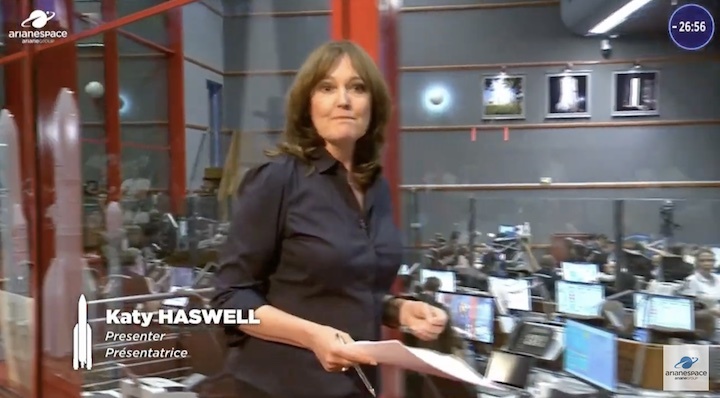














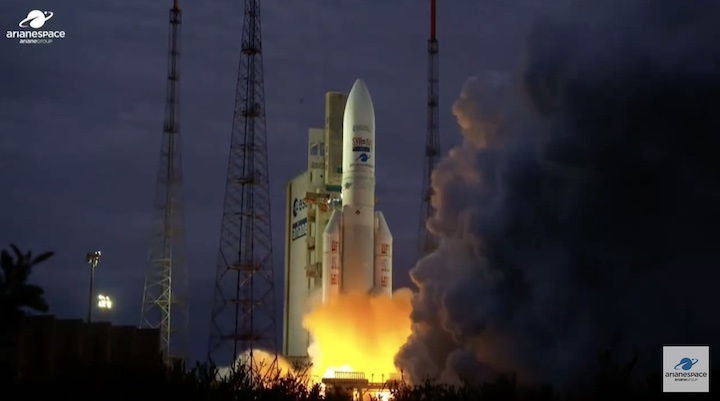

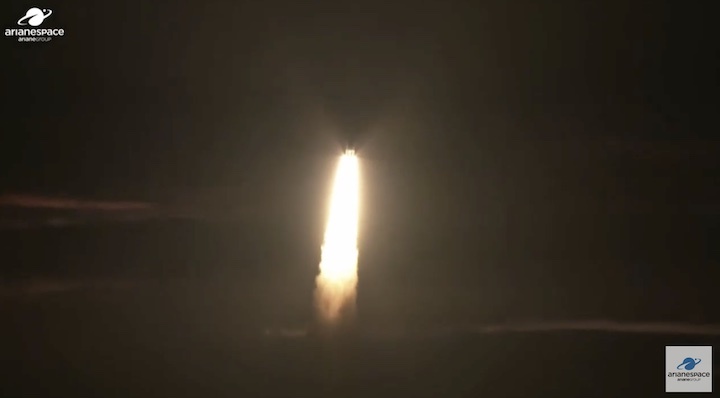




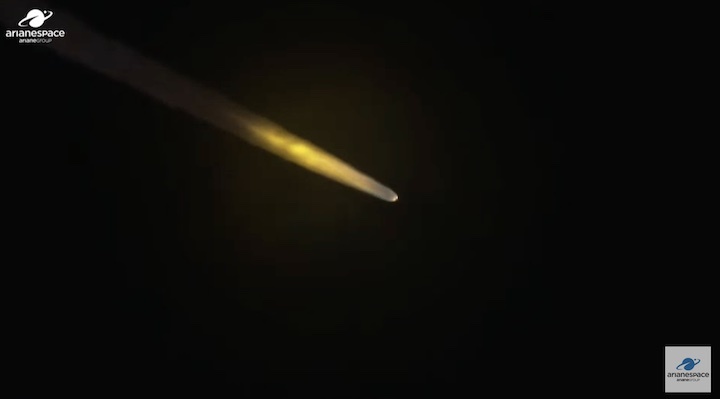
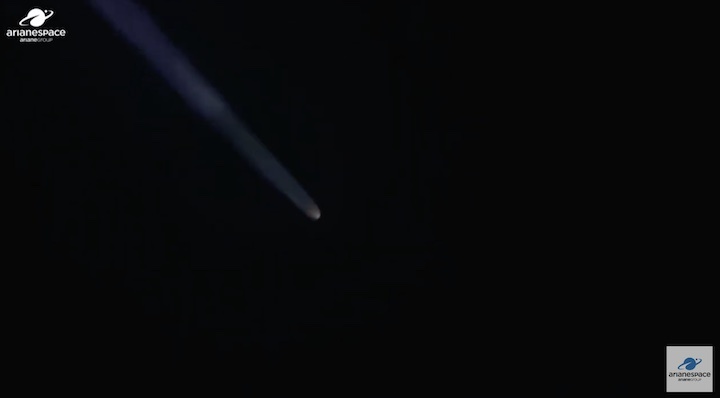

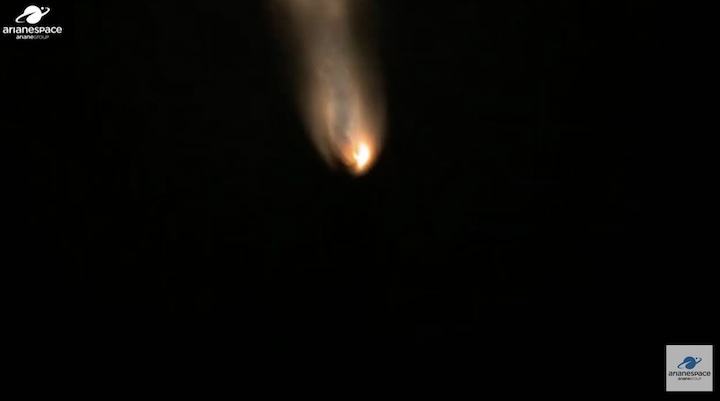

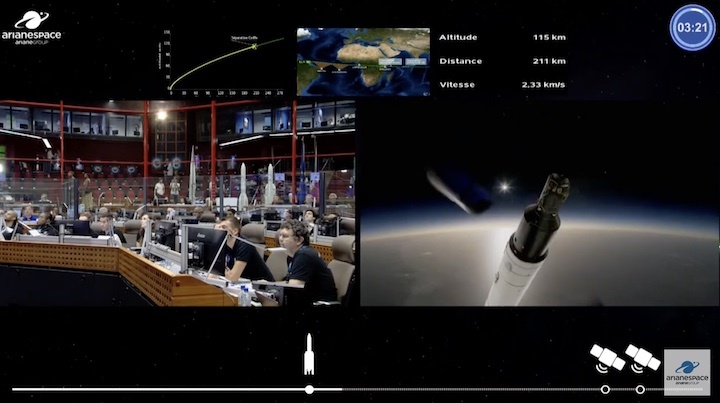


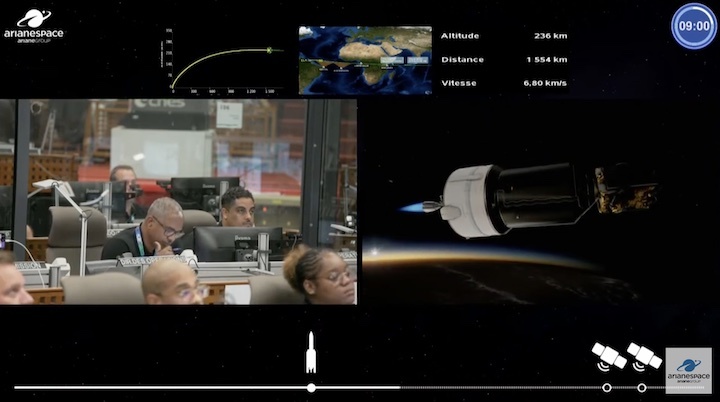
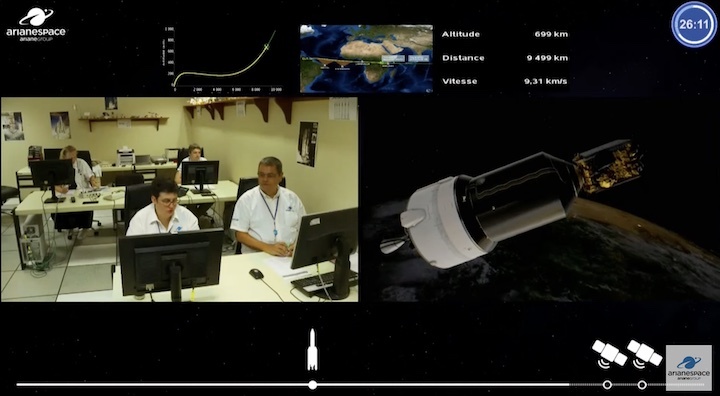
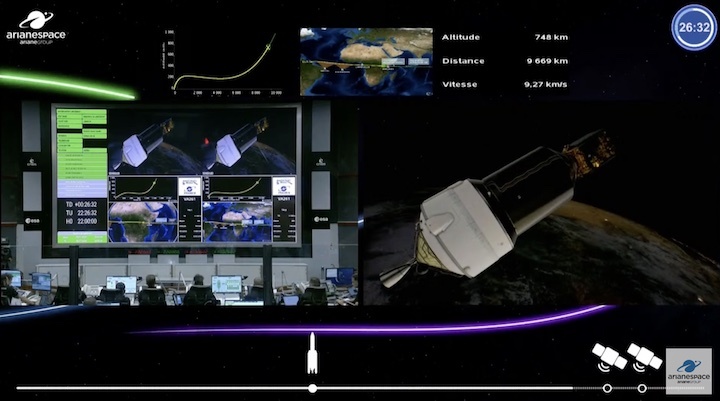










Quelle: arianespace
+++
A FRANCO-GERMAN SUCCESS FOR THE FINAL ARIANE 5 MISSION
- The 117th and final Ariane 5 launch, operated by Arianespace, placed two telecommunications satellites in orbit: Heinrich-Hertz-Satellit for the German government and SYRACUSE 4B for the French Armament General Directorate (DGA).
- Europe’s Ariane 5 heavy-lift launcher, for which ArianeGroup is the lead contractor, is taking its place in the annals of history and leaves an exceptional heritage of expertise and reliability to its successor Ariane 6.
- Ariane 6 will now take over from Ariane 5, in carrying out Europe’s institutional space missions and responding to the growing demands of the commercial market.
On July 5, 2023 at 7:00 p.m. local time, Ariane 5, operated by Arianespace, lifted off flawlessly from Europe’s spaceport in Kourou, French Guiana, carrying Heinrich-Hertz-Satellit for the German government and SYRACUSE 4B for the French Ministry of Defence..
The Heinrich-Hertz-Mission is the first dedicated German telecommunications satellite-based mission that will be used to conduct research and to test new technologies and telecommunications scenarios. The technologies on board are meant to respond smartly and flexibly to future challenges, to support future telecommunications scenarios and to be adapted from Earth to address new technical requirements and market needs. The mission is managed by the German Space Agency on behalf of the German Federal Ministry for Economic Affairs and Climate Action (BMWK) and with the participation of the German Federal Ministry of Defence (BMVg). The Heinrich-Hertz-Satellit was mainly developed and built by OHB System.
The SYRACUSE 4B satellite is part of the SYRACUSE IV program carried out under the leadership of the DGA in collaboration with the French Air and Space Force, and for the Space Command (CdE). Together with SYRACUSE 4A, it will enable French armed forces to remain permanently connected when they are deployed on operations. At sea, in the air, or on land, the armed forces need powerful and secure communications systems to be able to exchange information with theIr command center. Thanks to state-of-the-art equipment including an anti-jamming antenna and a digital onboard processor, SYRACUSE 4B will be fully protected against the most severe military threats. It will help guarantee French national sovereignty while also supporting NATO operations. Airbus Defence and Space and Thales Alenia Space joined forces to develop the SYRACUSE 4A and SYRACUSE 4B satellites so that the program could benefit fully from their combined expertise. .
“This 117th and last Ariane 5 mission is emblematic in several respects. Ariane 5 has just deployed two telecommunications satellites, SYRACUSE 4B and Heinrich-Hertz-Satellit, for France and Germany, the first two contributors to the Ariane program,” said Stéphane Israël, CEO of Arianespace. “This mission is also emblematic of Ariane 5’s ability to perform dual launches, which constitutes the very core of its success, with 197 satellites placed in geostationary orbit out of a total of 239 satellites deployed. Over its career, Ariane 5 has served 65 institutional and commercial customers from 30 countries. Ariane 5’s success heralds a promising career for Ariane 6.”
This launch also marks the end of the remarkable career of the HM7 upper stage engine, which flew on the first Ariane 1 and on the final Ariane 5. It helped power Ariane launchers 228 times, without ever failing. This veteran of spaceflight has been a crucial element in the European space adventure. It will be replaced on Ariane 6 by the re-ignitable Vinci engine.
“Ariane 5 is now taking its place in the annals of global space history. This final successful mission demonstrates once again its supreme reliability in the service of European autonomy and rounds off an exceptional career distinguished by a succession of technological and industrial achievements. I share the emotion of all the employees at ArianeGroup, Arianespace, the French and European space agencies CNES and ESA, and all our European partners, who have contributed to its success over the course of these 27 years,” said Martin Sion, CEO of ArianeGroup. “Together we are now taking up the challenge of Ariane 6, the beneficiary of the experience acquired with Ariane 5. It will be able to evolve and play a full role in guaranteeing independent, sustainable access to space for Europe, in a context of major strategic, economic and environmental challenges, to meet the needs of its institutional and commercial customers.”
Leading up to its inaugural flight, Ariane 6 is currently passing a series of key milestones in Europe and in French Guiana. Even more versatile and competitive, Ariane 6 will carry out its first missions with a rapid production ramp-up, supporting Europe’s institutional missions and meeting the swiftly growing demands of the commercial market.
The Ariane 5 heavy-lift launcher is an ESA program carried out in cooperation between public institutions and industry across 12 European partner states.
ArianeGroup is the lead contractor for the development and production of the Ariane family of launchers. It is responsible for Ariane 5 and Ariane 6 preparation operations up to lift-off. ArianeGroup is at the head of a vast industrial network of more than 600 companies, including 350 small and medium-size enterprises (SMEs). ArianeGroup delivers a flight-ready launcher on the launch pad to its subsidiary Arianespace, which markets and operates Ariane 5 from Europe’s spaceport in French Guiana. During Ariane 5 launch campaigns, Arianespace works closely with the French space agency (CNES), the design authority for the launcher and responsible for the satellite preparation facilities and the launch base.
Quelle: arianespace

